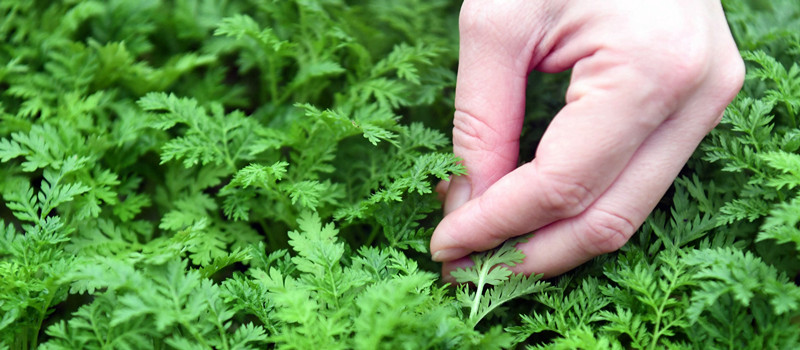Plant extract is a kind of natural substance formed by physical and chemical extraction, separation and concentration of one or more active components in plants without changing the structure of active components. Some have a higher concentration of active ingredients while others have lower concentrations. They should also be manufactured in a way to preserve the full spectrum of active constituents. It can be widely used as raw materials in food, beverage, medicine, health care products, cosmetics and other industries. There are many kinds of plant extracts, do you know how many kinds of plant extracts there are? The following information will help you differentiate between the various types of herbal concentrates.
Active ingredient content: Standard extract and Ratio extract.
Standard and ratio extract is a concept derived from modern plant medicine, which is the management standard to ensure the production quality of plant medicine and extract. Standard plant extract is a concept derived from modern plant medicine, which is the management standard to ensure the production quality of plant medicine and extract. Often the term is given more specific meanings, such as consistency of content of one or more ingredients in an extract. The American Herbal Products Association (AHPA) recently broadened the meaning of the term to emphasize that standardization must involve information agencies and regulators to produce products that are reasonably consistent.
Ratio Extract: The flow extract or powder extract made from plant raw materials after extraction and concentration. The number of raw materials before extraction and the mathematical ratio of the product after extraction and concentration. Proportional extracts generally do not have a very clear composition and content. For example, 10 kg of radix Scutellariae is extracted and concentrated into a 1 kg powder product, which is called the 10:1 Radix Scutellariae extract. There is no clear standard for important indexes such as baicalin in this extract. The concept of the proportional extract is vague, and usually thin layer scanning (reflection method) is used for qualitative detection.
The quality of each one depends on the amount of material used for extraction. High concentrations of plant matter will result in a low ratio of native extract. The native extract ratio should be around 2:1, which means that 50% of the original plant material is extracted to make the final product. A typical 2:1 blend of plant materials will yield one kilogram of pure, undiluted extract. Similarly, a small concentration of extractable material will result in a low percentage of the finished product.
Extraction solvent: Water extract, Solvent extract
Usually, ethanol, ether, acetone, and other organic solvents are the most commonly used; Alkali water, acid alcohol and other mixed solvent extracts are also used for different purposes and extraction methods. As they are derived in a different solvent, it’s important to find out which type of herbal extract you need.
Product form: Oil extract, Powder, Crystal, liposomal extracts etc.
Herbal extracts come in many forms. The physical state of the extract can be classified as solid or powdery, extractum, concentrate liquid and oils. Liquids, for example, are concentrated powders. The herbs are usually picked fresh and then steeped in a solvent, such as alcohol, and then evaporated to produce a powder.
The liquid herbs are suspended in a liquid. The liquid can be water or alcohol. The herbs can be dried, which results in an alcohol-containing extract. Then, the extract can be removed heat-free. Depending on the herb, the liquid herbal extract can be packaged as a soft gel. This form of herbal extract is best for diluted applications and can be used directly. Most people use powder extracts, but before buying a liquid extract, be sure to check the solvents.
The volatile oil is the essential oil, which is an oily liquid with aroma and volatility. The common volatile oil is peppermint oil, rose oil, garlic oil.
Ingredients: Glycosides, Polyphenols, Polysaccharides, Terpenoids, Flavonoids, Alkaloids, Organic acids and so on.
Flavonoids provide antibacterial, anti-inflammatory, antioxidant and other biological activities, common flavonoids include propolis, soybean isoflavones, anthocyanins, tea polyphenols and so on.
Polysaccharide has the effect of reducing serum cholesterol, anti-cancer and immunity enhancing, such as polysaccharide of ganoderma lucidum, mushroom and algae.
Glycosides are substances formed by the combination of sugar, phenols and flavonoids. Different aglycones have different physiological activities and have various functions.
Alkaloid is an important active ingredient of herbal medicine, such as small cleitine in coptis and ephedrine in ephedra.
Organic acids such as citric acid, lactic acid, malic acid, ascorbic acid and so on are the most effective substitutes for antibiotics, which can regulate intestinal flora.
Uses: Coloring, Flavor, Pharmacological, Dietary supplement and Health care.
Coloring: Plant pigments are the main components of plant colors. Some plants have unusually rich pigments, which can be used for the extraction of pigments. Available plant pigments include curcumin, safflower yellow, radish red, beet red, sorghum red, capsicum red and so on.
Flavor output: Plant extracts tend to be rich in characteristic ingredients that effectively stimulate the senses, such as sweeteners and volatile substances. The natural sweetener is a popular new type of sweetener. It is not only sweet but also an ideal substitute for sucrose. Such as stevia glycoside, grosvenin and so on.
Pharmacological Action: TCM has a long history of being used to treat diseases, especially in Asia. For example, ginkgo biloba extract, lotus seed heart extract, rhodiola extract can effectively improve cardiovascular system function;
Prebiotics refer to organic substances that can selectively promote the growth and reproduction of beneficial bacteria, such as bifidobacteria, and thus improve the health of the host without being digested or absorbed by the host. Most prebiotics used as food additives, such as inulin (from chicory), FOS (oligosaccharides), glucomannan (from konjac), soya oligosaccharides, dietary fiber and gums, are derived from plants.



